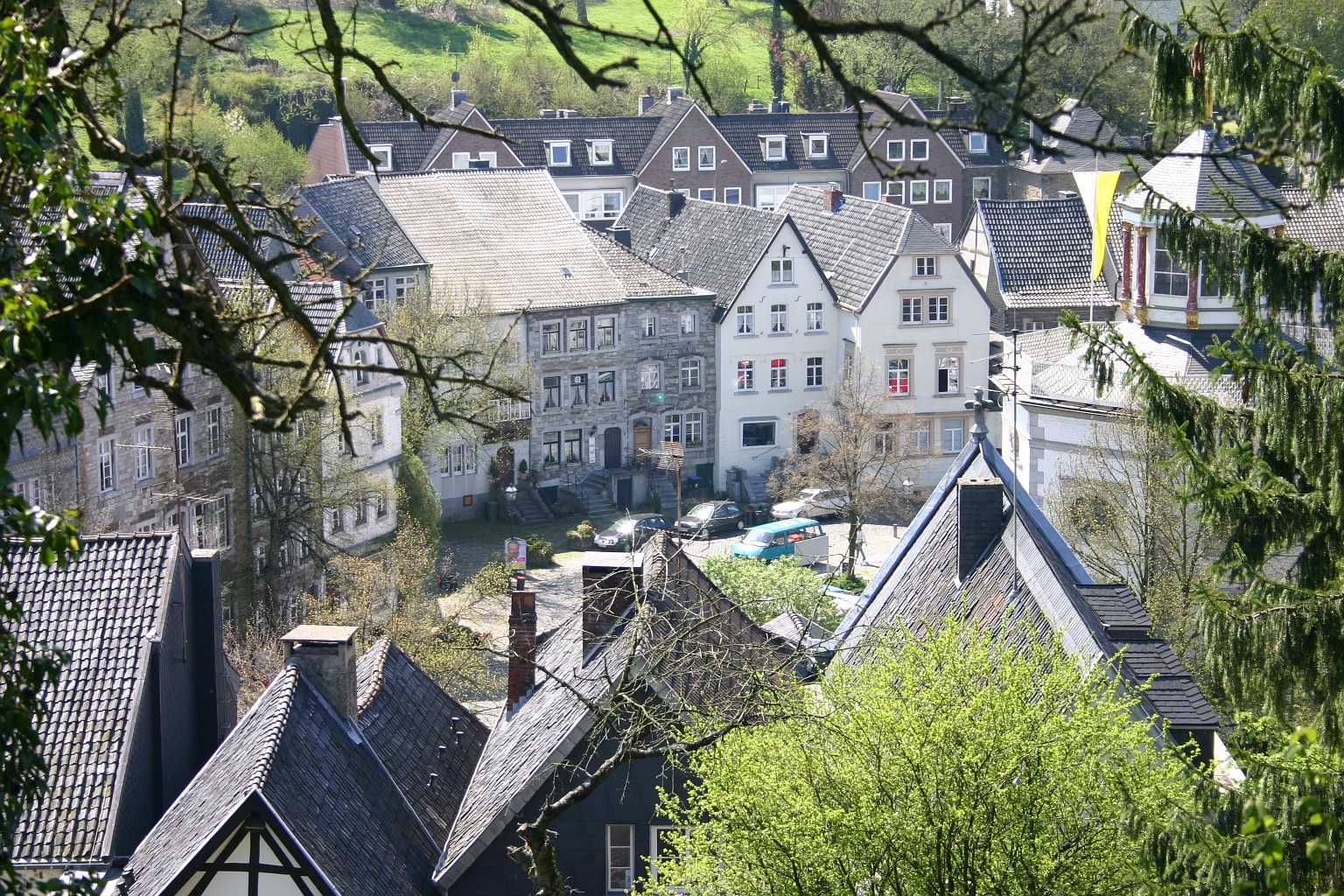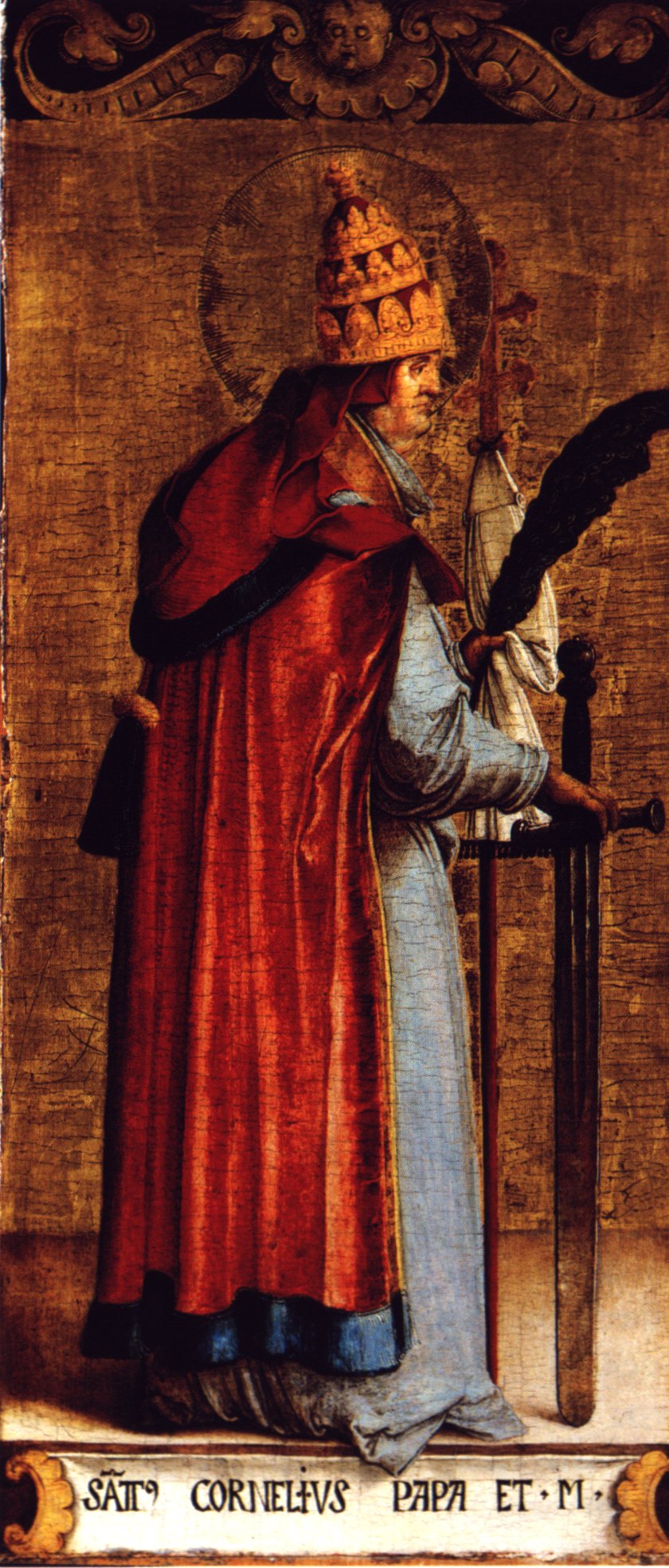|
Kornelimünster
Kornelimünster ( ksh, Mönster) is a town in the rural ''Münsterländchen'' area of Kornelimünster/Walheim, a district of Aachen, Germany. History The Kornelimünster Abbey was founded in 814 on the Inde River by Benedict of Aniane (750–821), at the suggestion of Louis the Pious, son and successor of Charlemagne. The cloister was originally called Redeemer Cloister on the Inde (''Erlöserkloster an der Inde''). In the middle of the 9th century, the cloister was given imperial immediacy and subsequently came into possession of a large swath of area surrounding the church. In 875, certain reliquaries were exchanged for one belonging to the martyr saint, Pope Cornelius (who died in 253). The cloister thereafter became known as Sancti Cornelii ad Indam (St Cornelius on the Inde), and then Kornelimünster. Today, the official title of the abbey is the Abbey of St Benedict of Aniane and Pope Cornelius. In 1500 the abbey became part of the Lower Rhenish–Westphalian Circle, ... [...More Info...] [...Related Items...] OR: [Wikipedia] [Google] [Baidu] |
Kornelimünster Abbey
Kornelimünster Abbey (german: Benediktinerabtei Kornelimünster), also known as Abbey of the Abbot Saint Benedict of Aniane and Pope Cornelius, is a Benedictine monastery that has been integrated since 1972. The abbey is located in Aachen (in the district of Kornelimünster/Walheim) in North Rhine-Westphalia in Germany. History The monastery was founded in 814 on the river Inde by Benedict of Aniane, an adviser to Emperor Louis the Pious (successor to Charlemagne). The monastery was at first known as the "Monastery of the Redeemer on the Inde". In the mid-9th century, the monastery became an Imperial abbey ("Reichsunmittelbar") and received large endowments of land, as well as Biblical or Saviour's relics: a loincloth, a sudarium and two shroud-like cloths. [...More Info...] [...Related Items...] OR: [Wikipedia] [Google] [Baidu] |
Kornelimünster/Walheim
Kornelimünster/Walheim is the southernmost ''Stadtbezirk'' (borough) of Aachen, Germany, and borders the Eifel area of North Rhine-Westphalia, as well as Belgium. It became part of Aachen in 1972, after all of the communities surrounding the city were reorganized administratively. The countryside is called ''Münsterländchen''. Communities * Kornelimünster, Administrative seat of the district, with historic town center * Walheim, central business area of the district, and its largest community * Friesenrath, on the border with the Eifel community of Roetgen * Hahn, on the Inde River * Lichtenbusch, German-Belgian border town with a border crossing for A44/ E40 * Nütheim * Oberforstbach, including an industrial park on Pascalstraße (especially for businesses specializing in information technology) * Schleckheim * Schmithof on the Vennbahn * Sief, with border crossing to Raeren (Belgium) * Eich Pictures Image:Kornelimünster, die Antoniuskapelle Dm-geen nummer fot ... [...More Info...] [...Related Items...] OR: [Wikipedia] [Google] [Baidu] |
Aachen
Aachen ( ; ; Aachen dialect: ''Oche'' ; French and traditional English: Aix-la-Chapelle; or ''Aquisgranum''; nl, Aken ; Polish: Akwizgran) is, with around 249,000 inhabitants, the 13th-largest city in North Rhine-Westphalia, and the 28th-largest city of Germany. It is the westernmost city in Germany, and borders Belgium and the Netherlands to the west, the triborder area. It is located between Maastricht (NL) and Liège (BE) in the west, and Bonn and Cologne in the east. The Wurm River flows through the city, and together with Mönchengladbach, Aachen is the only larger German city in the drainage basin of the Meuse. Aachen is the seat of the City Region Aachen (german: link=yes, Städteregion Aachen). Aachen developed from a Roman settlement and (bath complex), subsequently becoming the preferred medieval Imperial residence of Emperor Charlemagne of the Frankish Empire, and, from 936 to 1531, the place where 31 Holy Roman Emperors were crowned Kings of the ... [...More Info...] [...Related Items...] OR: [Wikipedia] [Google] [Baidu] |
Brand (Aachen)
Brand is a borough of Aachen, Germany, with about 18,000 residents. The borough lies in the southern part of Aachen and borders Kornelimünster/Walheim, Forst, Oberforstbach und Eilendorf, as well as the town of Stolberg. Brand was a self-administered community in the district of Aachen until 1972, when administrative reforms of the communities in the area caused Brand to be absorbed into Aachen. The current borough of Brand is made up of the towns Brand, Freund, Krauthausen, Niederforstbach, Brander Feld and Rollef. At 270.9 meters, the highest point of the borough is a noise barrier along the Bundesautobahn 44, which runs through Brand Forest. Town symbols and the coat of arms The Coat of Arms of Brand is divided horizontally and shows in its upper section the horn of Pope Cornelius, a symbol of the areas previous affiliation to the Kornelimünster Abbey. In the lower part is a burning set of three hills (a somewhat common heraldic device). This symbolizes the three qu ... [...More Info...] [...Related Items...] OR: [Wikipedia] [Google] [Baidu] |
Lower Rhenish–Westphalian Circle
The Lower Rhenish–Westphalian Circle (german: Niederrheinisch-Westfälischer Reichskreis, nl, Nederrijns-Westfaalse Kreits) was an Imperial Circle of the Holy Roman Empire. It comprised territories of the former Duchy of Lower Lorraine, Frisia and the Westphalian part of the former Duchy of Saxony. The circle was made up of numerous small states, however the Counts De la Marck were able to collect a significant amount of territories, the United Duchies of Jülich-Cleves-Berg from 1521 on. The Empire's largest ecclesiastical territory was held by the Prince-Bishops of Münster. Composition The circle was made up of the following states: ;Tranfers : The Duchy of Guelders passed to the Burgundian Circle in 1548 : Luxemburg passed to the Burgundian Circle in 1512 : The County of Drenthe passed to the Burgundian Circle in 1548 : The Lordship of Groningen passed to the Burgundian Circle in 1548 : The Lordship of Overijssel passed to the Burgundian Circle in 1548 : T ... [...More Info...] [...Related Items...] OR: [Wikipedia] [Google] [Baidu] |
Pope Cornelius
Pope Cornelius was the bishop of Rome from 6th or 13th March 251 until his martyrdom in June 253. He was pope during and following a period of persecution of the church, while a schism occurred over how repentant church members who had practiced pagan sacrifices to protect themselves could be readmitted to the church. He agreed with Cyprian of Carthage that those who had lapsed could be restored to communion after varying forms of Reinitiation and Penance. This position was in contrast to the Novatianists, who held that those who failed to maintain their confession of faith under persecution would not be received again into communion with the church. This resulted in a short-lived schism in the Church of Rome that spread as each side sought to gather support. Cornelius held a synod that confirmed his election and excommunicated Novatian, but the controversy regarding lapsed members continued for years. The persecutions resumed in 251 under Emperor Trebonianus Gallus. Cornelius wa ... [...More Info...] [...Related Items...] OR: [Wikipedia] [Google] [Baidu] |
Benedict Of Aniane
Benedict of Aniane ( la, Benedictus Anianensis; german: Benedikt von Aniane; 747 – 12 February 821 AD), born Witiza and called the Second Benedict, was a Benedictine monk and monastic reformer, who left a large imprint on the religious practice of the Carolingian Empire. His feast day is either February 11 or 12, depending on liturgical calendar. Life According to Ardo, Benedict's biographer, he was the son of a Visigoth, Aigulf, Count of Maguelonne (''Magalonensis comes''). Originally given the Gothic name Witiza, he was educated at the Frankish court of Pippin the Younger, and entered the royal service as a page. He served at the court of Charlemagne, and took part in the Italian campaign of Charlemagne in 773 where he almost drowned in the Ticino near Pavia while attempting to save his brother. The experience led him to act on a resolve which had been slowly forming in him, to renounce the world and live the monastic life. He later left the court and was received int ... [...More Info...] [...Related Items...] OR: [Wikipedia] [Google] [Baidu] |
Eifel
The Eifel (; lb, Äifel, ) is a low mountain range in western Germany and eastern Belgium. It occupies parts of southwestern North Rhine-Westphalia, northwestern Rhineland-Palatinate and the southern area of the German-speaking Community of Belgium. The Eifel is part of the Rhenish Massif; within its northern portions lies the Eifel National Park. Geography Location The Eifel lies between the cities of Aachen to the north, Trier to the south and Koblenz to the east. It descends in the northeast along a line from Aachen via Düren to Bonn into the Lower Rhine Bay. In the east and south it is bounded by the valleys of the Rhine and the Moselle. To the west it transitions in Belgium and Luxembourg into the geologically related Ardennes and the Luxembourg Ösling. In the north it is limited by the Jülich-Zülpicher Börde. Within Germany it lies within the states of Rhineland-Palatinate and North Rhine-Westphalia; in the Benelux the area of Eupen, St. Vith and Luxembourg. ... [...More Info...] [...Related Items...] OR: [Wikipedia] [Google] [Baidu] |
Roetgen
Roetgen () is a municipality in the district of Aachen, in North Rhine-Westphalia, Germany. Geography Roetgen is located approximately 16 km (10 mi) south-east of Aachen, near the border with Belgium. It is in the north of the High Fens-Eifel Nature Park on the Weser stream which rises a few kilometres to the south. Between Roetgen and Rott is the Dreilägerbach Reservoir, which is fed by the Dreilägerbach stream and the artificially Schleebachgraben and Hasselbachgraben ditches. The attached waterworks supplies large parts of Aachen and the Dutch town of Kerkrade with drinking water. The parish of Roetgen includes the villages of Roetgen, Rott and Mulartshütte, which is the oldest part of Roetgen. To the northwest is the borough of Aachen with its quarters of Kornelimünster and Walheim, to the northeast is the town of Stolberg with its quarters of Venwegen and Zweifall, to the southeast is the Simmerath parish of Lammersdorf. To the west, on the far ... [...More Info...] [...Related Items...] OR: [Wikipedia] [Google] [Baidu] |
International E-road Network
The international E-road network is a numbering system for roads in Europe developed by the United Nations Economic Commission for Europe, United Nations Economic Commission for Europe (UNECE). The network is numbered from E1 up and its roads cross national borders. It also reaches Central Asian countries like Kyrgyzstan, since they are members of the UNECE. Main international traffic arteries in Europe are defined by ECE/TRANS/SC.1/2016/3/Rev.1 which consider three types of roads: motorways, Limited-access road, limited access roads, and ordinary roads. In most countries, the roads carry the European route designation alongside national designations. Belgium, Norway and Sweden have roads which only have the European route designations (examples: European route E18, E18 and European route E6, E6). The United Kingdom, Iceland and Albania only use national road designations and do not show the European designations at all. Ukraine does not number its routes at all except in int ... [...More Info...] [...Related Items...] OR: [Wikipedia] [Google] [Baidu] |





